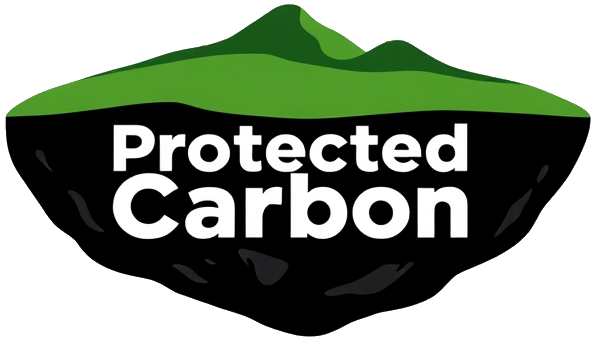- Oil & Gas
- Dalai Lake National Nature Reserve, Inner Mongolia
Protected Carbon in China
China is home to a diverse range of protected areas. The International Union for Conservation of Nature (IUCN) has identified 101 protected areas in China that meet its conservation criteria. These protected areas vary in size, location, and remoteness and include both large remote regions such as the 37 thousand square kilometre Qinghai Hoh Xil World Heritage Site as well as local nature reserves like Shanghai's Chongming Dongtan Ramsar Site. It is worth noting that while these 101 areas are recognised and included in the IUCN's database, many other protected areas in China still need to be appraised. The total number of protected areas within China has been estimated to reach over 10,000. Thus, this analysis will only consider the subset of protected areas included in the IUCN's database. Nonetheless, the IUCN's recognition of these protected areas is a critical step towards their conservation and preservation, as it provides an international standard for their management and protection. The conservation efforts in these areas are vital, as they play an essential role in maintaining the ecological balance of China's diverse ecosystems. Historically, China's protected areas have been administered by numerous agencies, creating uncertainty around which regulations apply. In March 2018, the national government proposed new laws to place all protected areas under the Ministry of Natural Resources, empowered to consider both development and conservation goals. This "Guidance on Establishing a System of Protected Areas with National Parks as the Main Body" was adopted in 2019. Historically, at least one-third of China's nature reserves have been without a local management agency, staff, or sustained funding.
Affected Areas
These protected areas in China contain current or planned fossil fuel projects. Oil, gas, and coal extraction in protected areas harms their natural value while contributing to climate change.
- Fossil Fuel Type
- Affected Area
- Oil & Gas
- Dianchi
- Oil & Gas
- Nan Dongting Wetland & Waterfowl Reserve
- Oil & Gas
- Shandong Yellow River Delta Wetland
- Oil & Gas
- Shuangtai Estuary
- Oil & Gas
- Xilin Gol Natural Steppe Protected Area
- Oil & Gas
- Yancheng
- Coal
- Xilin Gol Natural Steppe Protected Area
Extraction Data
This table shows a summary of potential emissions from fossil fuel extraction projects in protected areas in China (including projects that are currently extracting, planned or idled).
- Fossil Fuel Type
- Fossil Fuel Quantity
- CO2 Quantity (MT CO2e)
- Oil & Gas
- 617.99 MMBOE
- 258.69
- Coal
- 724.00 MT
- 1,448.00
- Combined
- 1,706.69
Deposits Data
This table shows a summary of potential emissions from fossil fuel deposits under protected areas in China. Many of these are not yet the target of any industry activities and could more easily become part of a non-extraction policy.
- Fossil Fuel Type
- CO2 Quantity (MT CO2e)
- Oil & Gas
- 1,232.80
- Coal
- 81,638.22
- Combined
- 82,871.02
Early Warnings
This table shows untouched protected areas that have planned carbon extraction projects, along with their respective startup dates.
- Affected Area
- Startup Date
- Nan Dongting Wetland & Waterfowl Reserve
- 2029
- Dalai Lake National Nature Reserve, Inner Mongolia
- 2038
- Xilin Gol Natural Steppe Protected Area
- 2038
- Dianchi
- 2044
Profiting Companies
- Fossil Fuel Type
- Profiting Company
- Oil & Gas
- Citic China
- Oil & Gas
- PetroChina
- Oil & Gas
- Sinopec
- Oil & Gas
- Yunnan Energy
- Coal
- China Datang [35.34%]; HKSCC Nominees Limited [32.9%]; Tianjin Energy Investment Group [7%]; Hebei Construction & Investment Group[6.93%]; Beijing Energy [6.81%]; Others [3.27%]
- Coal
- China Datang [35.34%]; HKSCC Nominees Limited [32.9%]; Tianjin Energy Investment Group [7%]; Hebei Construction & Investment Group[6.93%]; Beijing Energy Group [6.81%]; Others[3.27%]
- Coal
- China Energy [46%]; China Huaneng[26%]; Others[28%]
- Coal
- China Energy [51%]; Chaoyang Hongwen Investment Company [49%]
- Coal
- Inner Mongolia Energy Power Generation Investment Group
Map
Sources
- Protected Areas: UNEP-WCMC and IUCN, Protected Planet: The World Database on Protected Areas. October 2023.
- Oil & gas extraction: Rystad Energy, U Cube Upstream Oil and Natural Gas Solution. October 2023.
- Coal extraction: Global Energy Monitor, Global Coal Mine Tracker. October 2023.
- CO2 equivalencies: Kühne, Kjell, Big numbers for bold activists: A quick method for estimating potential emissions of fossil fuel projects. Energy Research & Social Science, Volume 79, September 2021.
- Reserves & resources: German Federal Institute for Geosciences and Natural Resources (BGR), German and Global Energy Supplies. 2021.
Disclaimer
This page was created using the best data available. Despite this, errors and omissions are likely. Please contact our team with any errors or confirmation requests you may have. Further information on sources and methodology is available on our data page.
